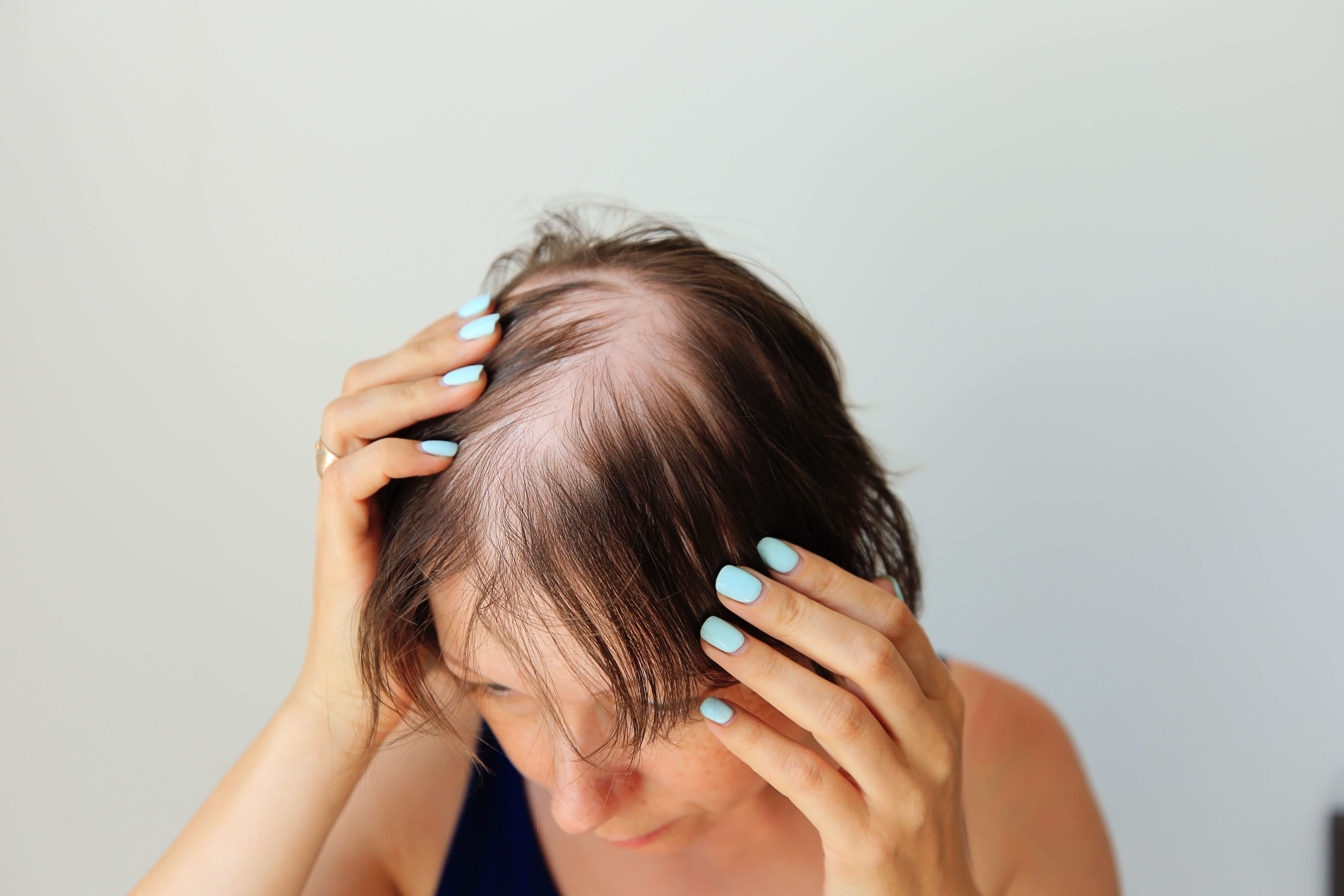- Case-Based Roundtable
- General Dermatology
- Eczema
- Chronic Hand Eczema
- Alopecia
- Aesthetics
- Vitiligo
- COVID-19
- Actinic Keratosis
- Precision Medicine and Biologics
- Rare Disease
- Wound Care
- Rosacea
- Psoriasis
- Psoriatic Arthritis
- Atopic Dermatitis
- Melasma
- NP and PA
- Skin Cancer
- Hidradenitis Suppurativa
- Drug Watch
- Pigmentary Disorders
- Acne
- Pediatric Dermatology
- Practice Management
- Prurigo Nodularis
- Buy-and-Bill
News
Article
Concentrated Growth Factors Show Promise for Treating AGA
Author(s):
A recent study found after 6 months, CGF therapy resulted in a sustained increase in terminal hair density without significant adverse events.
Image Credit: © Iryna - stock.adobe.com

Androgenetic alopecia (AGA) impacts physical appearance and emotional well-being, presenting a common concern for dermatologists and plastic surgeons worldwide.1
Treatment options for AGA include follicular unit transplantation (FUT) and medications like finasteride and minoxidil. While FUT is invasive, medications also have mixed results.2 Recently, platelet-rich plasma (PRP) has emerged as a treatment, showing promise due to its high levels of platelets and growth factors.3 Concentrated Growth Factors (CGF), an advanced form of PRP, contains even higher levels of growth factors and has shown potential in wound healing.4 Despite this, research on CGF for treating AGA is limited. A recent study aimed to evaluate the safety and effectiveness of CGF injections in improving hair density and reducing hair loss in AGA patients.5
Methods
This retrospective study assessed the efficacy of CGF in AGA at a single center from October 2021 to April 2023. The research excluded patients who had undergone anti-AGA treatments within the past 6 months or had prior hair transplantation surgery.
CGF was prepared by drawing 18–27 mL of whole blood from each participant, depending on the extent of hair loss, which was then processed in sterile serum collection tubes and centrifuged using a specialized machine with varying speeds. About 2–3 mL of CGF was extracted from every 9 mL of whole blood. The study stated CGF was then injected 3 times, with each session spaced 3 to 4 weeks apart.
To evaluate the treatment's effectiveness, patients were assessed at baseline, 3 months (approximately 1 month after the final injection), and 6 months following the first injection. Trichophotographs were taken using a dermatoscope to measure hair count and classify hair into terminal (thick, pigmented) and vellus (thin, unpigmented) types. Hair densities and the terminal-to-vellus (T/V) ratio were calculated for statistical analysis. Additionally, an independent doctor compared photos to baseline images using the Global Aesthetic Improvement Scale (GAIS), and patients completed a satisfaction survey.
Results
The study involved 15 AGA participants (2 women and 13 men) with a median age of 31 years and a history of hair loss ranging from 1 to 8 years. Five participants had previously used topical minoxidil. Researchers stated comparison of images taken before and 6 months after treatment showed “significant” improvements. After 12 weeks, the study found the mean hair density increased by approximately 40 hairs/cm² compared to baseline (p < 0.01), with a sustained rise in terminal hair density (p < 0.01). The hair growth ratio was reported to be 1.54 ± 0.10 at the end of follow-up (p < 0.01). No significant changes were observed in the T/V ratio.
Patient satisfaction, as measured by the GAIS, improved from a mean score of 0.8 ± 0.77 at 3 months to 1.93 ± 0.88 at 6 months (p < 0.01). The study stated none of the participants experienced deterioration compared to their baseline condition. Minor issues such as greasy hair texture, itching, or burning were reported by 20% of participants within 1 to 2 weeks, but no severe adverse events like pain, redness, or bleeding were noted. Overall, researchers found the treatment to be satisfactory and effective.
Conclusion
The study found CGF injections showed “significant" promise in improving hair density and terminal hair density for patients with AGA, with positive outcomes reflected in GAIS scores. Researchers stated CGF’s effectiveness, combined with its straightforward preparation and lack of major adverse events, suggests it could be a valuable addition to AGA treatment options. However, further research with larger sample sizes and long-term follow-ups was recommended to fully establish its efficacy, safety, and the mechanisms underlying its effects on hair growth.
References
- Hussein RS, Dayel SB, Abahussein O. Botulinum toxin A for hair loss treatment: A systematic review of efficacy, safety, and future directions. JPRAS Open. 2023;38:296-304. Published 2023 Sep 21. doi:10.1016/j.jpra.2023.09.006
- Ntshingila S, Oputu O, Arowolo AT, et al. Androgenetic alopecia: An update. JAAD Int. 2023;13:150-158. Published 2023 Jul 22. doi:10.1016/j.jdin.2023.07.005
- Dicle Ö, Bilgic Temel A, Gülkesen KH. Platelet-rich plasma injections in the treatment of male androgenetic alopecia: A randomized placebo-controlled crossover study. J Cosmet Dermatol. 2020;19(5):1071-1077. doi:10.1111/jocd.13146
- Qiao J, An N, Ouyang X. Quantification of growth factors in different platelet concentrates. Platelets. 2017;28(8):774-778. doi:10.1080/09537104.2016.1267338
- Cao S, Zhu M, Bi Y. Evaluation of the safety and efficacy of concentrated growth factors for hair growth promotion in androgenetic alopecia patients: A retrospective single-centre, single-arm study. J Cosmet Dermatol. 2024; 00: 1-6. doi:10.1111/jocd.16519






